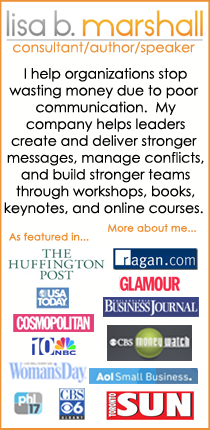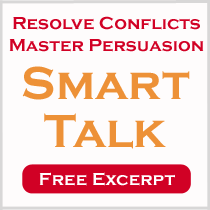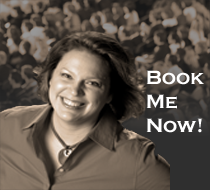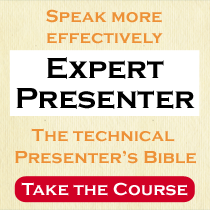Secrets to sounding conversational
A recent client of mine asked me the following…
“Can you help me put together a word list of “small” words to help me sound more conversational. Since my first language isn’t English, often we have very little conversational practice and instead focus on the formal written structures. So I need some help to know which words I should use to sound more conversational.“
There are are many ways to sound conversational. Here’s what I’ve learned.
The secret to sounding conversational in a presentation is to prepare as if you are having a conversation with an audience member. A back-and-forth exchange where your fellow research scientist asks questions and you supply answers. That way, your talk will sound more natural since it should address the issues that would be important to your audience and most importantly does so in a lively, clear, and passionate manner.
I have worked with many clients that like a script for their talk. They tell me it gives them a sense of confidence that they will include everything they need to cover. Particularly for those who first language is not English, they often prefer having the words planned ahead of time so they don’t struggle to find the words at the time of delivery. However, most people create the script by directly copying the carefully chosen words from the paper and this is a big mistake!
If you are using words directly from the written paper, you are doing yourself a huge disservice. We speak differently than we write, if you don’t believe me try reading a transcript of a conversation. In fact, all of us have heard speakers that sound like they are reading, even when they are not. I think you will agree that this style of delivery is boring and difficult to listen to.
I always recommend that speakers not create or use a script at all, instead simply outline the main points. However, for a non-native speakers this approach can cause anxiety. In addition, some have told me that their boss “insists” on a script. So my suggestion then is to create the script, but don’t start with the written word, start with the spoken word.
What exactly do I mean? Take out a printed copy of your slides, sit with someone that is smart (but is not an expert in your field) turn on your recorder and start to tell them about each slide. However, don’t talk to them as if you are presenting. Take a good look at each slide, then turn it over and begin talking to the other person about your main message for that slide. If they look confused or ask a question, incorporate that into a new way to describe the main point of that slide. When you are happy with your explanation move on to your next slide. Then when you are done, you can then transcribe your conversation into scripted text.
When you practice, use the script as a guideline only and free to change it as you practice aloud. Here are a few concrete tips to help you make your words sound conversational.
- Use short sentences. When we talk we naturally use short sentences. And when we write, we tend to use longer sentences.
- Use contractions. Again, in natural conversation we use contractions which are rarely used in formal scientific writing.
- Don’t use words that you struggle to pronounce. Just pick another word that means the same thing.
- Use rhetorical questions. As I am sure you know, these are questions asked for effect and not for an answer. Rhetorical questions can help to create the sense of conversation taking place between you and the audience.
- Be open in the way you talk about your research. Give your audience a glimpse into your analytical process and reactions. Follow the conversational example below, not the formal.
Formal: The research shows that recruitment of polychrome proteins is mediated by YY1
Conversational: I went into the lab on new years eve because my boss didn’t think I should waste time on this particular experiment and I was so excited when I looked in the microscope and I could see that the recruitment of the polychrome proteins were mediated by YY1.
- Use the active voice. Don’t say “YY1 was investigated to determine…” when you can say “we studied YYI and determined…”
- Use natural conversational transition words and not words found in writing only. Many people, including myself, when studying a second language, focus on the formal written structures and still need some guidance for informal conversational structures.
These tips, taken together, will definitely help you to sound more conversational. If you give this approach a try, let us know how it worked out by commenting below.
Do you want to learn more? Sign up for the next small group presentation skills workshop, consider one-on-one coaching, or ask your organization to sponsor a large group seminar. Afterall, you didn’t learn to ride a bike by reading a book–you needed an expert coach (your Dad) to show you how to do it and then you needed lots of encouragement and practice, right?











There is 1 comment .